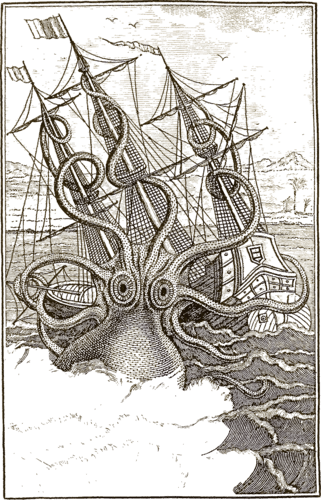VGSL network specification¶
kraken implements a dialect of the Variable-size Graph Specification Language (VGSL), enabling the specification of different network architectures for image processing purposes using a short definition string.
Basics¶
A VGSL specification consists of an input block, one or more layers, and an output block. For example:
[1,48,0,1 Cr3,3,32 Mp2,2 Cr3,3,64 Mp2,2 S1(1x12)1,3 Lbx100 Do O1c103]
The first block defines the input in order of [batch, heigh, width, channels] with zero-valued dimensions being variable. Integer valued height or width input specifications will result in the input images being automatically scaled in either dimension.
When channels are set to 1 grayscale or B/W inputs are expected, 3 expects RGB color images. Higher values in combination with a height of 1 result in the network being fed 1 pixel wide grayscale strips scaled to the size of the channel dimension.
After the input, a number of layers are defined. Layers operate on the channel dimension; this is intuitive for convolutional layers but a recurrent layer doing sequence classification along the width axis on an image of a particular height requires the height dimension to be moved to the channel dimension, e.g.:
[1,48,0,1 S1(1x48)1,3 Lbx100 O1c103]
or using the alternative slightly faster formulation:
[1,1,0,48 Lbx100 O1c103]
Finally an output definition is appended. When training sequence classification networks with the provided tools the appropriate output definition is automatically appended to the network based on the alphabet of the training data.
Examples¶
[1,1,0,48 Lbx100 Do 01c59]
Creating new model [1,1,0,48 Lbx100 Do] with 59 outputs
layer type params
0 rnn direction b transposed False summarize False out 100 legacy None
1 dropout probability 0.5 dims 1
2 linear augmented False out 59
A simple recurrent recognition model with a single LSTM layer classifying lines normalized to 48 pixels in height.
[1,48,0,1 Cr3,3,32 Do0.1,2 Mp2,2 Cr3,3,64 Do0.1,2 Mp2,2 S1(1x12)1,3 Lbx100 Do 01c59]
Creating new model [1,48,0,1 Cr3,3,32 Do0.1,2 Mp2,2 Cr3,3,64 Do0.1,2 Mp2,2 S1(1x12)1,3 Lbx100 Do] with 59 outputs
layer type params
0 conv kernel 3 x 3 filters 32 activation r
1 dropout probability 0.1 dims 2
2 maxpool kernel 2 x 2 stride 2 x 2
3 conv kernel 3 x 3 filters 64 activation r
4 dropout probability 0.1 dims 2
5 maxpool kernel 2 x 2 stride 2 x 2
6 reshape from 1 1 x 12 to 1/3
7 rnn direction b transposed False summarize False out 100 legacy None
8 dropout probability 0.5 dims 1
9 linear augmented False out 59
A model with a small convolutional stack before a recurrent LSTM layer. The extended dropout layer syntax is used to reduce drop probability on the depth dimension as the default is too high for convolutional layers. The remainder of the height dimension (12) is reshaped into the depth dimensions before applying the final recurrent and linear layers.
[1,0,0,3 Cr3,3,16 Mp3,3 Lfys64 Lbx128 Lbx256 Do 01c59]
Creating new model [1,0,0,3 Cr3,3,16 Mp3,3 Lfys64 Lbx128 Lbx256 Do] with 59 outputs
layer type params
0 conv kernel 3 x 3 filters 16 activation r
1 maxpool kernel 3 x 3 stride 3 x 3
2 rnn direction f transposed True summarize True out 64 legacy None
3 rnn direction b transposed False summarize False out 128 legacy None
4 rnn direction b transposed False summarize False out 256 legacy None
5 dropout probability 0.5 dims 1
6 linear augmented False out 59
A model with arbitrary sized color image input, an initial summarizing recurrent layer to squash the height to 64, followed by 2 bi-directional recurrent layers and a linear projection.
Convolutional Layers¶
C[{name}](s|t|r|l|m)[{name}]<y>,<x>,<d>
s = sigmoid
t = tanh
r = relu
l = linear
m = softmax
Adds a 2D convolution with kernel size (y, x) and d output channels, applying the selected nonlinearity.
Recurrent Layers¶
L[{name}](f|r|b)(x|y)[s][{name}]<n> LSTM cell with n outputs.
G[{name}](f|r|b)(x|y)[s][{name}]<n> GRU cell with n outputs.
f runs the RNN forward only.
r runs the RNN reversed only.
b runs the RNN bidirectionally.
s (optional) summarizes the output in the requested dimension, return the last step.
Adds either an LSTM or GRU recurrent layer to the network using eiter the x (width) or y (height) dimension as the time axis. Input features are the channel dimension and the non-time-axis dimension (height/width) is treated as another batch dimension. For example, a Lfx25 layer on an 1, 16, 906, 32 input will execute 16 independent forward passes on 906x32 tensors resulting in an output of shape 1, 16, 906, 25. If this isn’t desired either run a summarizing layer in the other direction, e.g. Lfys20 for an input 1, 1, 906, 20, or prepend a reshape layer S1(1x16)1,3 combining the height and channel dimension for an 1, 1, 906, 512 input to the recurrent layer.
Helper and Plumbing Layers¶
Max Pool¶
Mp[{name}]<y>,<x>[,<y_stride>,<x_stride>]
Adds a maximum pooling with (y, x) kernel_size and (y_stride, x_stride) stride.
Reshape¶
S[{name}]<d>(<a>x<b>)<e>,<f> Splits one dimension, moves one part to another
dimension.
The S layer reshapes a source dimension d to a,b and distributes a into dimension e, respectively b into f. Either e or f has to be equal to d. So S1(1, 48)1, 3 on an 1, 48, 1020, 8 input will first reshape into 1, 1, 48, 1020, 8, leave the 1 part in the height dimension and distribute the 48 sized tensor into the channel dimension resulting in a 1, 1, 1024, 48*8=384 sized output. S layers are mostly used to remove undesirable non-1 height before a recurrent layer.
Note
This S layer is equivalent to the one implemented in the tensorflow implementation of VGSL, i.e. behaves differently from tesseract.
Regularization Layers¶
Do[{name}][<prob>],[<dim>] Insert a 1D or 2D dropout layer
Adds an 1D or 2D dropout layer with a given probability. Defaults to 0.5 drop probability and 1D dropout. Set to dim to 2 after convolutional layers.
